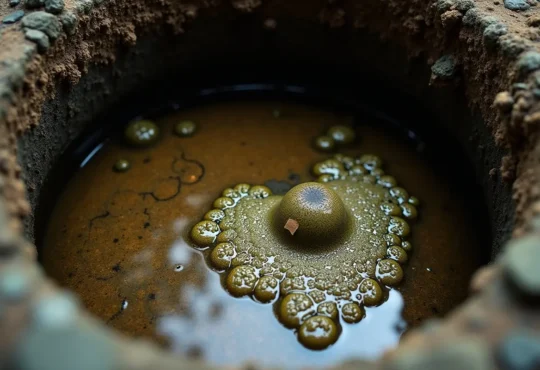
How to Install a Kitchen Sink
Transforming your culinary haven with a sleek, functional kitchen sink can elevate both aesthetics and efficiency. Arm yourself with the knowledge to install a kitchen sink seamlessly. From meticulous preparation to the final touches, we’ll navigate through each phase, ensuring a flawless installation that harmonizes with your existing countertops.
Contents
- 1 Assessing the Prerequisites
- 2 Gathering the Essentials
- 3 Preparing the Workspace
- 4 Removing the Old Sink
- 5 Attaching Drains and Faucets
- 6 Measuring and Marking
- 7 Applying Silicone Sealant
- 8 Securing the Sink
- 9 Connecting Plumbing Components
- 10 Testing and Final Touches
- 11 Embracing the Benefits
- 12 Seeking Professional Assistance
- 13 Maintenance and Longevity
- 14 Exploring Sink Styles and Materials
- 15 Embracing Sustainability
- 16 Unleashing Creativity
- 17 Frequently Asked Questions (FAQ)
Assessing the Prerequisites
Before diving into the installation process, it’s crucial to assess the compatibility of your new sink with the existing countertop material. While swapping sinks can be a feasible DIY project for various countertop types, some materials may demand extra caution or professional assistance.
Granite, quartz, and solid-surface countertops generally accommodate sink replacements with relative ease, provided you adhere to the guidelines meticulously.
Gathering the Essentials
Equipping yourself with the right tools is paramount for a successful installation. Ensure you have the following items at your disposal:
- Painter’s tape
- Plumber’s putty
- Plumber’s tape
- Drill
- Hex tool (if installing a hot water dispenser)
- Marker
- Needle-nose pliers
- Plumber’s wrench
- Screwdrivers (flat and Phillips)
- Adjustable wrench
- Clear silicone caulk
- Caulk gun
Additionally, you may require a wet saw or an angle grinder fitted with a diamond blade if modifying your countertop is necessary.
Preparing the Workspace
Before commencing the installation process, it’s essential to turn off the water supply, unplug any nearby appliances, and ensure the area is well-ventilated. Protect your flooring by laying down an old blanket or towel, as the new sink’s metal edges can potentially scratch or damage the surface.
Removing the Old Sink
The first step in the installation process is to carefully remove the existing sink. Detach the water lines from the faucet and disconnect the garbage disposal, if present. Next, loosen any clips or fasteners securing the sink to the countertop from underneath.
Gently lift the old sink and set it aside, ensuring you clean any residual sealant or debris from the countertop surface.
Attaching Drains and Faucets
Before dropping the new sink into the countertop opening, it’s recommended to attach as many components as possible while the sink is easily accessible. This includes the drains, faucets, and any additional fixtures like water filtration systems or garbage disposals.
Follow the manufacturer’s instructions carefully, and use plumber’s putty generously to ensure a secure, leak-proof seal.
Measuring and Marking
Accurate measurements are crucial for a seamless installation. Determine the proper placement of any additional components, such as water filtration systems, and mark their positions on the interior cabinet walls with a marker. Drop the sink into the countertop opening to verify that all components fit correctly and make any necessary adjustments.
Applying Silicone Sealant
Using a caulk gun, apply a continuous bead of clear silicone sealant around the edge of the countertop opening. This step is crucial to ensure a watertight seal between the sink and the countertop.
Securing the Sink
Gently lower the new sink into the countertop opening, ensuring it sits snugly within the silicone bead. Most drop-in sinks come equipped with clips or brackets that secure the sink to the countertop. Align these clips and tighten them using a screwdriver, ensuring a firm connection between the sink and the countertop.
Connecting Plumbing Components
With the sink securely in place, it’s time to connect the plumbing components. Attach the water lines to the faucet, ensuring a tight seal using plumber’s tape. Connect the drain pipes to the basket strainer and garbage disposal, following the manufacturer’s instructions carefully.
Testing and Final Touches
Once all connections are secure, turn on the water supply and check for any leaks. If everything is leak-free, plug in the garbage disposal and test its operation. Finally, wipe away any excess silicone sealant, and admire your newly installed kitchen sink!
Embracing the Benefits
Installing a new kitchen sink can breathe new life into your culinary space, enhancing both functionality and aesthetics. From updated fixtures to improved drainage and water flow, a fresh sink can streamline your daily routines and elevate the overall ambiance of your kitchen.
Seeking Professional Assistance
While sink installation can be a rewarding DIY project, it’s essential to recognize your skill level and limitations. If you encounter any challenges or feel uncertain about any aspect of the process, it’s always advisable to seek the expertise of a professional plumber or contractor.
Their experience and knowledge can ensure a flawless installation, preventing potential damage to your countertops or plumbing system.
Maintenance and Longevity
To ensure the longevity of your new kitchen sink, it’s essential to follow proper maintenance practices. Regularly clean and inspect the sink for any signs of wear or damage, and address any issues promptly. With proper care, your new sink can serve as a functional and aesthetically pleasing centerpiece in your kitchen for years to come.
Exploring Sink Styles and Materials
The market offers a diverse array of sink styles and materials to complement various kitchen designs and preferences. From the classic farmhouse sinks to sleek undermount options, and from stainless steel to copper or granite composites, the possibilities are endless.
Explore different options to find the perfect sink that aligns with your lifestyle, design aesthetic, and functional requirements.
Embracing Sustainability
In today’s environmentally conscious world, it’s essential to consider the sustainability of your kitchen fixtures. Many manufacturers now offer sinks crafted from recycled or eco-friendly materials, reducing the environmental impact of your renovation project. Explore these options to create a beautiful and sustainable kitchen space.
Unleashing Creativity
While functionality is paramount, a kitchen sink installation also presents an opportunity to unleash your creativity. Consider incorporating unique design elements, such as custom-made sinks or eye-catching faucets, to add a personal touch to your culinary haven.
Collaborate with skilled artisans or explore DIY projects to create a truly one-of-a-kind kitchen space that reflects your style and personality.
Frequently Asked Questions (FAQ)
Can I install a kitchen sink myself?
If you want to do it yourself, it’s essential to assess the complexity of the task and your comfort level. If you’re unsure or encounter any challenges, it’s advisable to seek the assistance of a professional plumber to ensure a proper installation and prevent potential damage.
How to install a kitchen sink step by step?
The installation process typically involves removing the old sink, attaching the new sink’s components (drains, faucets, garbage disposal), applying silicone sealant, lowering the sink into the countertop opening, securing it with clips or brackets, connecting the plumbing, and testing for leaks.
How do you attach a kitchen sink to a countertop?
Most drop-in sinks come with clips or brackets that secure the sink to the countertop. After applying silicone sealant around the countertop opening, the sink is lowered into place, and the clips or brackets are tightened using a screwdriver to firmly attach the sink to the countertop.
Do you need a plumber to install a kitchen sink?
While experienced DIYers can tackle sink installation, hiring a professional plumber is recommended, especially for complex installations or if you’re unsure about any aspect of the process. Plumbers have the expertise to ensure a proper installation, prevent potential damage, and address any unforeseen issues.
What is required to install a sink?
You’ll need the new sink itself, along with various tools such as plumber’s putty, silicone sealant, wrenches, screwdrivers, and potentially a wet saw or angle grinder if modifying the countertop. Additionally, you may need components like faucets, drains, garbage disposals, and any necessary plumbing supplies.





 Hi I'm Joe.
Hi I'm Joe. 